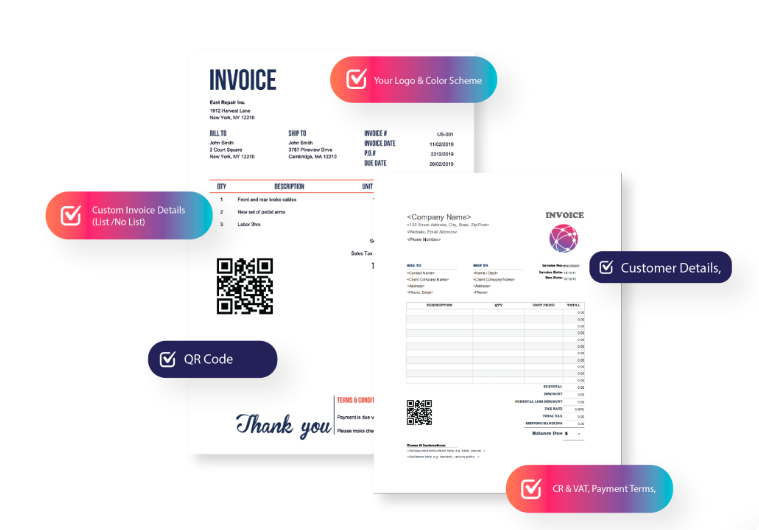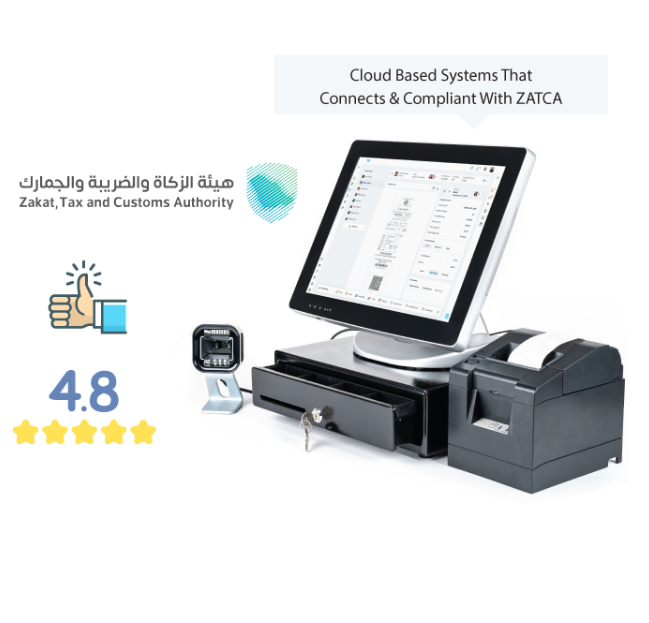The Saudi Arabian business landscape has been undergoing rapid transformation, with digital solutions becoming central to operational efficiency. One of the most significant changes is the introduction of e invoicing saudi arabia. This change is not just a regulatory update; it’s a shift toward a more transparent and efficient tax system. But what exactly is e-invoicing, and how does it impact businesses in Saudi Arabia? Let’s dive into the details to give you a comprehensive understanding.
What is E-Invoicing?
E-invoicing, or electronic invoicing, is a process that involves generating, storing, and exchanging invoices digitally. Instead of handling paper invoices, businesses in Saudi Arabia are now required to manage their invoices electronically, complying with the requirements set by the Zakat, Tax, and Customs Authority (ZATCA).
The move towards e-invoicing aims to improve tax compliance, reduce tax evasion, and promote fair competition within the market. With these digital invoices, the Saudi government can better track financial transactions, ensuring transparency and accuracy.
Why Has Saudi Arabia Implemented E-Invoicing?
Saudi Arabia introduced e-invoicing as part of its Vision 2030 plan, which aims to modernize the country’s economy and improve the efficiency of government services. E-invoicing supports this vision by enhancing:
- Tax Compliance – Ensuring businesses report transactions accurately.
- Transparency – Reducing the possibility of tax evasion.
- Economic Development – Making it easier for companies to do business and manage finances.
- Environmental Impact – Reducing the need for paper invoices and cutting down waste.
In addition to these benefits, e-invoicing creates a streamlined process for the government to audit businesses and ensure compliance with tax laws.
The Phases of E-Invoicing Implementation in Saudi Arabia
E-invoicing in Saudi Arabia has been implemented in two primary phases:
Phase 1: Generation Phase
In this phase, businesses were required to start generating electronic invoices instead of paper invoices. Key requirements in this phase included:
- Digital Invoice Creation: All businesses had to create digital invoices for B2B (business-to-business) and B2C (business-to-consumer) transactions.
- Data Storage: E-invoices had to be stored electronically for future reference and regulatory compliance.
- ZATCA Compliance: All e-invoicing processes needed to follow the standards set by the ZATCA.
Phase 2: Integration Phase (July 1, 2023)
In this phase, businesses must connect their e-invoicing systems directly with the ZATCA platform. This integration allows ZATCA to monitor transactions in real-time, enhancing transparency and reducing the chances of tax fraud.
During this phase, businesses must comply with additional requirements such as:
- Invoice Transmission: Invoices must be transmitted directly to ZATCA’s systems.
- Invoice Validation: The system will verify invoice data to ensure compliance.
- Detailed Information: E-invoices should contain information such as VAT details, buyer and seller information, and a QR code for validation.
Who is Required to Use E-Invoicing in Saudi Arabia?
The e-invoicing regulations apply to nearly all VAT-registered businesses operating in Saudi Arabia. Whether you’re a large corporation or a small retailer, if you’re VAT-registered, you are obligated to issue e-invoices. However, certain entities like foreign diplomats and international organizations may be exempted under specific conditions.
What Should an E-Invoice Include?
An e-invoice in Saudi Arabia must meet several criteria outlined by ZATCA to ensure it is valid and compliant. Here’s what should be included:
- Seller Information: Name, VAT registration number, and address.
- Buyer Information: Name and VAT number (if applicable).
- Invoice Number: A unique identifier for the transaction.
- Date and Time: When the transaction occurred.
- VAT Rate: Applicable VAT rate, with clear identification if zero-rated or exempt.
- Total Amount: Including VAT, to provide transparency on the complete transaction value.
- QR Code: This is mandatory for B2C transactions, allowing for quick validation.
Benefits of E-Invoicing for Businesses
Implementing e-invoicing may seem challenging at first, but the benefits it brings to your business are worth the effort:
- Enhanced Accuracy: Eliminates errors common in manual invoicing.
- Improved Efficiency: Speeds up the invoicing process, reducing wait times for payments.
- Data Security: Digital invoices are stored securely, reducing the risk of loss or damage.
- Cost Savings: Reduces the need for paper and printing costs.
- Better Cash Flow Management: E-invoices help businesses track payments and manage cash flow more effectively.
- Easier Compliance: With automated compliance checks, e-invoicing makes it easier to stay within legal requirements.
Challenges of E-Invoicing Adoption in Saudi Arabia
While e-invoicing offers multiple benefits, there are also challenges that businesses may face:
- Initial Setup Costs: Implementing e-invoicing requires investment in software, which can be costly, especially for smaller businesses.
- Learning Curve: Employees need training to understand the new system, which may take time.
- System Integration: Businesses must ensure that their e-invoicing software can integrate smoothly with ZATCA’s system.
- Data Privacy Concerns: With sensitive transaction data being stored electronically, businesses must adopt robust cybersecurity measures to protect against breaches.
Choosing the Right E-Invoicing Software
To comply with ZATCA’s regulations, it’s essential to have reliable e-invoicing software. Here are some key features to look for when choosing e-invoicing software:
- ZATCA Compliance: Make sure the software meets all regulatory requirements.
- User-Friendly Interface: An intuitive interface makes it easy for employees to generate and manage invoices.
- Integration Capabilities: Your software should seamlessly integrate with your accounting or ERP systems.
- Data Security: Look for software that offers secure data storage and strong encryption to protect sensitive information.
- Automated VAT Calculation: This feature helps ensure that all invoices include the correct VAT calculations.
- QR Code Generation: Essential for compliance with ZATCA, especially for B2C transactions.
Why Invest in E-Invoicing Software Now?
With the shift towards digital invoicing, businesses that adopt e-invoicing software sooner rather than later will find themselves ahead of the curve. E-invoicing isn’t just about meeting regulatory requirements; it’s also an opportunity to optimize and streamline business operations. Investing in ZATCA-compliant e-invoicing software ensures a smooth transition, better compliance, and increased efficiency.
Common Questions about E-Invoicing in Saudi Arabia
Do all businesses have to comply with e-invoicing?
Yes, all VAT-registered businesses must comply, though some exemptions may apply based on the nature of the entity.
What happens if my business doesn’t comply with e-invoicing regulations?
Non-compliance can result in fines and penalties, so it’s essential to meet the regulatory requirements to avoid complications.
How do I know if my e-invoicing software is compliant with ZATCA?
Always choose software certified by ZATCA or check with the provider to ensure full compliance with the latest regulations.
Conclusion
In a rapidly evolving business environment, e invoicing saudi arabia represents a step toward greater transparency, efficiency, and compliance. For businesses, understanding these requirements and adopting the right software solutions is crucial to stay competitive and avoid potential penalties. By transitioning to e-invoicing, companies can streamline their invoicing process, reduce errors, and ensure they’re contributing to a modern, tax-compliant Saudi economy.
As you consider your e-invoicing options, keep in mind that investing in the right software can save time, reduce costs, and enhance your overall business operations. Embracing e-invoicing is not just about ticking off a regulatory checkbox; it’s about future-proofing your business in a digital world.





